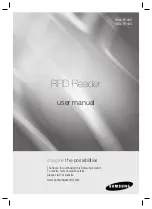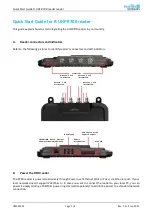
- Page 10 -
A. RUST. Some rusting of steel components is
normal over a period of time, especially in
areas where paint has been scraped off due
to normal use and handling.
B. EXCESSIVE RUST - evidenced by pitting,
flaking or powdering to the touch indicated
that some of the parent metal has been
eaten away. Such components are of
uncertain strength and should not be used.
C. Certain types of atmospheric contamination,
such as from salt water, power plants, paper
pulp mills, petrochemical and copper or
similar processing plants may severely
corrode steel after relatively short exposures.
Such corrosion may appear to be rust but is
often of a brighter or different color than
normal. Equipment of an unusual color, all
over or in parts, must be checked for
chemical corrosion or contamination. It is
dangerous to continue to use such corroded
components.
OTHER CONSIDERATIONS
NOTE: ALL WELDING MUST BE DONE BY CERTIFIED WELDERS ONLY!
areas will usually rust more quickly than the
surrounding painted areas. Worn or old
paint still provides some protection.
F. When replacing broken weldments, lock
pins, springs, and other missing parts,
always use the proper parts obtained from
the original manufacturer/supplier or
authorized agent. Substitution of other parts
or makeshift devices may impair the fit with
other components and may create user-
hazards.
G. End frames and other major components
that are more than 2" out of line are
generally beyond straightening.
Components which are difficult or impossible
to connect together may be slightly bent,
bowed, or racked out of line, and should be
straightened before reusing. NEVER
FORCE COMPONENTS TO MAKE THEM
FIT!
REMEDIES AND REPAIRS
MAINTENANCE PROCEDURES (CONTINUED)
D. Equipment exposed to fire or undue heat
may exhibit a gray, or smoke-blackened
appearance combined with possible
blistering paint. Such heat generally affects
the strength of the material and makes it
dangerous to continue its use.
E. Heat or corrosion-damaged equipment is of
uncertain strength, which may only be
determinable by destructive testing of all
equipment suspected of being so damaged.
EQUIPMENT SUBJECT TO DESTRUCTIVE
TESTS CANNOT BE RETURNED TO
SERVICE.
F. The performance of all equipment is
improved by regular maintenance, such as
removal of plaster and other construction
materials, lubrication as appropriate and
painting periodically. If repainted, dipping or
spraying by a method which assures that the
paint gets to the inside of tubular members
is recommended. Always thoroughly inspect
for cracks and other damage before
repainting.
A. Bent or distorted members may be cold
straightened only - NEVER USE HEAT TO
STRAIGHTEN SCAFFOLDING
COMPONENTS. After straightening, inspect
the metal for developed cracks; if it still
shows kinks or depressions, it has been
weakened at that point and should not be
used until repaired, if repairs are possible.
B. Broken welds at tubular or other joints may
be repaired. The entire weld around the joint
must be repaired - not merely the broken
portion.
C. Splits along original seams of tubes may be
rewelded if they do not extend more than 1-1/
2" along their seams.
D. Cracks around part or all the circumference
of a tube may never be repaired by welding.
Do not use components with this type of
damage.
E. After rewelding, smooth the weld, remove the
scale, clean the surrounding heat-affected
zone, and repaint the whole area. Rewelded





























